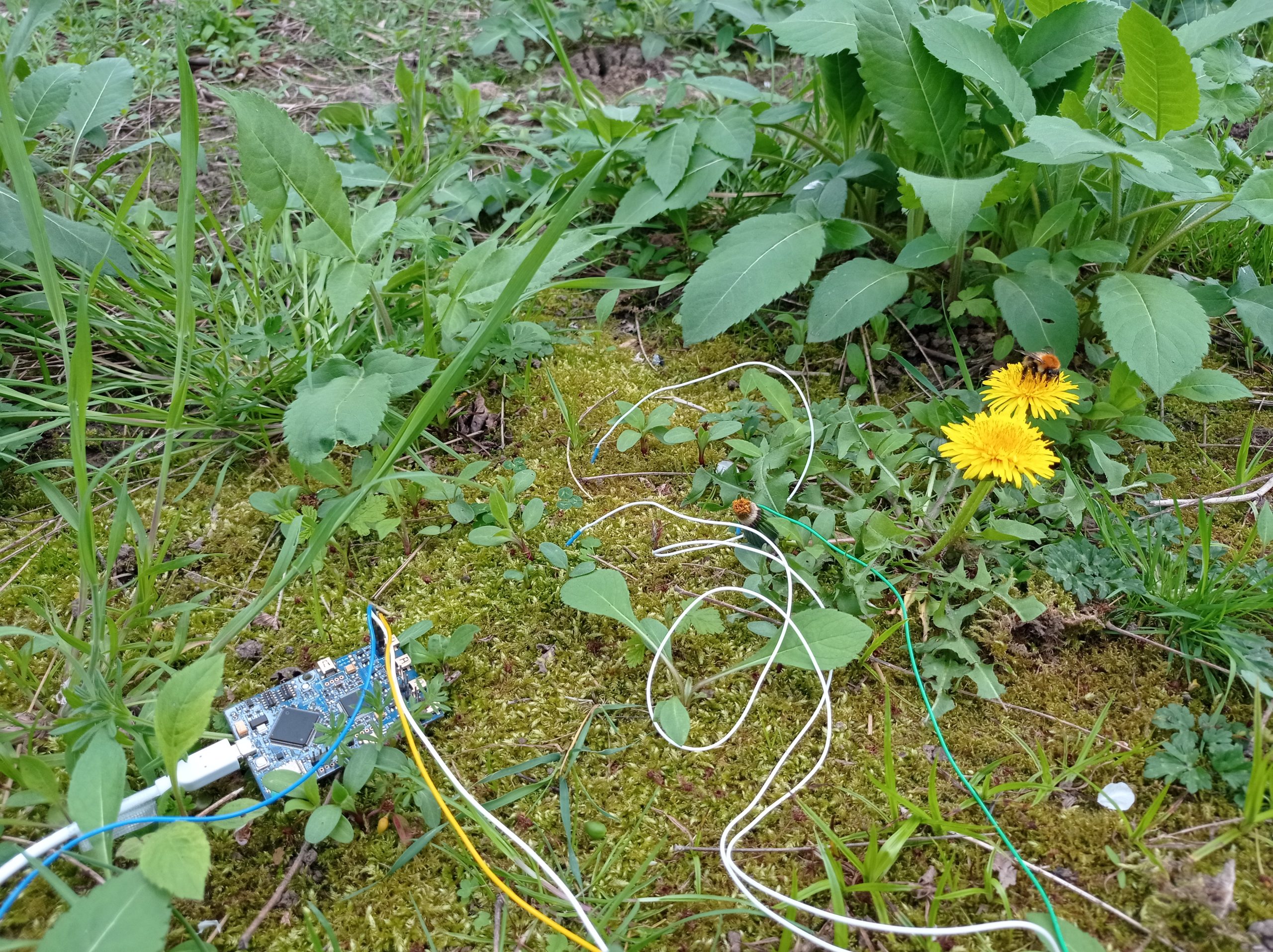ÉCOLOGIES SONORES ET CO-CRÉATIVITÉS AU-DELÀ DE L’HUMAIN – postdoctorat EUR ArTeC
Les crises environnementales et sociales redéfinissent nos manières d’« habiter le monde » (Ingold, 2000 ; Larrère, 2018) et interrogent les limites des modèles de ce que certain·es nomment l’Anthropocène. Parallèlement à ces bouleversements, des pratiques musicales ancrées dans les théories de l’écologie se sont développées (Solomos, 2023). Parmi elles, l’écologie sonore (Schafer, 1994) s’est constituée comme champ, traversé depuis les années 1970 par des déplacements terminologiques — éco-acoustique (Paparrigopoulos, 2024 ; Bruyninckx, 2018), écosophie sonore (Barbanti, 2023) — qui traduisent une volonté de construire un commun critique, relationnel et perceptif de l’écoute. Liée aux outils techniques de la prise de son (Galand, 2012) et de l’informatique musicale (Truax, 2008), la discipline a évolué vers des pratiques intégrant des processus interconnectés et des agentivités distribuées entre êtres humain•es, non-humains organiques et machines. Deux aspects : (1) la décentralisation de l’être humain·e dans la pensée écologique du projet musical et (2) l’implication des non-humains organiques et machines, demandent alors à redéfinir l’écologie sonore contemporaine au sein d’un paradigme de co-créativité, appelant une écologie de la création musicale au-delà de l’être humain•e, c’est-à-dire post-humaniste (Barad, 2007 ; Haraway, 2020).
Notre projet de recherche-création propose de penser l’écologie sonore en intégrant l’analyse des technologies qui permettent précisément de composer des interactions au-delà de l’humain. Quelles formes ou morphologies musicales émergent des interactions composées ? Qu’est-ce que ces dispositifs techniques et ces morphologies disent des relations et des écologies musicales contemporaines en train de se produire ?
En prenant appui sur les expérimentations menées dans « Mycelium Garden » (Schuh 2023 ; 2024) et SOIL (Schuh & Goutmann 2025), ce projet développera un dispositif d’improvisation in situ impliquant musicien·ne·s, IA et entités organiques, au sein de deux jardins (MSH Paris Nord ; base sous-marine de Saint-Nazaire). En se fondant sur l’analyse des microperformativités (Hauser & Strecker 2020), en convoquant les théories de l’improvisation (Canonne 2010), et les pratiques diffractives de l’IA (Scurto et al. 2021), il s’agira d’explorer les modalités de co-composition au sein de dispositifs hybrides. Une analyse des morphologies sonores générées sera mise en regard d’un corpus d’œuvres récentes et analysées, afin d’en dégager une cartographie critique. Cette recherche interroge ainsi les agentivités performatives des non-humains et propose une écologie sonore entendue comme un espace de négociation entre agents, milieux et technologies.
ÉQUIPE DU PROJET
Contrat postdoctoral EUR ArTeC – Projet réalisé au CICM/Musidanse/université Paris 8 sous la tutelle d’Alain Bonardi et à APM/IRCAM sous la cotutelle de Clément Canonne, et bénéficiant d’une résidence de création au CNCM Athénor de Saint-Nazaire.
SOUND ECOLOGIES AND CO-CREATIVITIES BEYOND THE HUMAN – postdoctorat EUR ArTeC
Environmental and social crises are redefining our ways of “inhabiting the world” (Ingold, 2000; Larrère, 2018) and questioning the limits of the models of what some call the Anthropocene. Alongside these upheavals, musical practices rooted in ecological theories have developed (Solomos, 2023). Among them, acoustic ecology (Schafer, 1994) has taken shape as a field, traversed since the 1970s by terminological shifts—ecoacoustics (Paparrigopoulos, 2024; Bruyninckx, 2018), sonic ecosophy (Barbanti, 2023)—that reflect a desire to build a critical, relational, and perceptual commons of listening. Linked to the technical tools of sound recording (Galand, 2012) and computer music (Truax, 2008), the discipline has evolved toward practices integrating interconnected processes and distributed agencies among human beings, organic non-humans, and machines. Two aspects—(1) the decentralization of the human being in the ecological thinking of the musical project and (2) the involvement of organic non-humans and machines—thus call for a redefinition of contemporary sound ecology within a paradigm of co-creativity, calling for an ecology of musical creation beyond the human, that is, posthumanist (Barad, 2007; Haraway, 2020).
Our research-creation project proposes to think sound ecology by integrating the analysis of technologies that precisely make it possible to compose interactions beyond the human. What musical forms or morphologies emerge from the composed interactions? What do these technical apparatuses and these morphologies say about the relations and contemporary musical ecologies in the making?
Building on the experiments conducted in “Mycelium Garden” (Schuh 2023; 2024) and SOIL (Schuh & Goutmann 2025), this project will develop an in situ improvisation apparatus involving musicians, AI, and organic entities, within two gardens (MSH Paris Nord; the submarine base of Saint-Nazaire). Drawing on the analysis of micro-performativities (Hauser & Strecker 2020), mobilizing theories of improvisation (Canonne 2010), and the diffractive practices of AI (Scurto et al. 2021), the aim will be to explore modalities of co-composition within hybrid apparatuses. An analysis of the generated sonic morphologies will be set against a corpus of recent works and analyses, in order to produce a critical mapping. This research thus interrogates the performative agencies of non-humans and proposes a sound ecology understood as a space of negotiation between agents, milieus, and technologies.
PROJECT TEAM
EUR ArTeC postdoctoral fellowship – Project carried out at CICM/Musidanse/Université Paris 8 under the supervision of Alain Bonardi and at APM/IRCAM under the joint supervision of Clément Canonne, and benefiting from a creative residency at CNCM Athénor in Saint-Nazaire.
